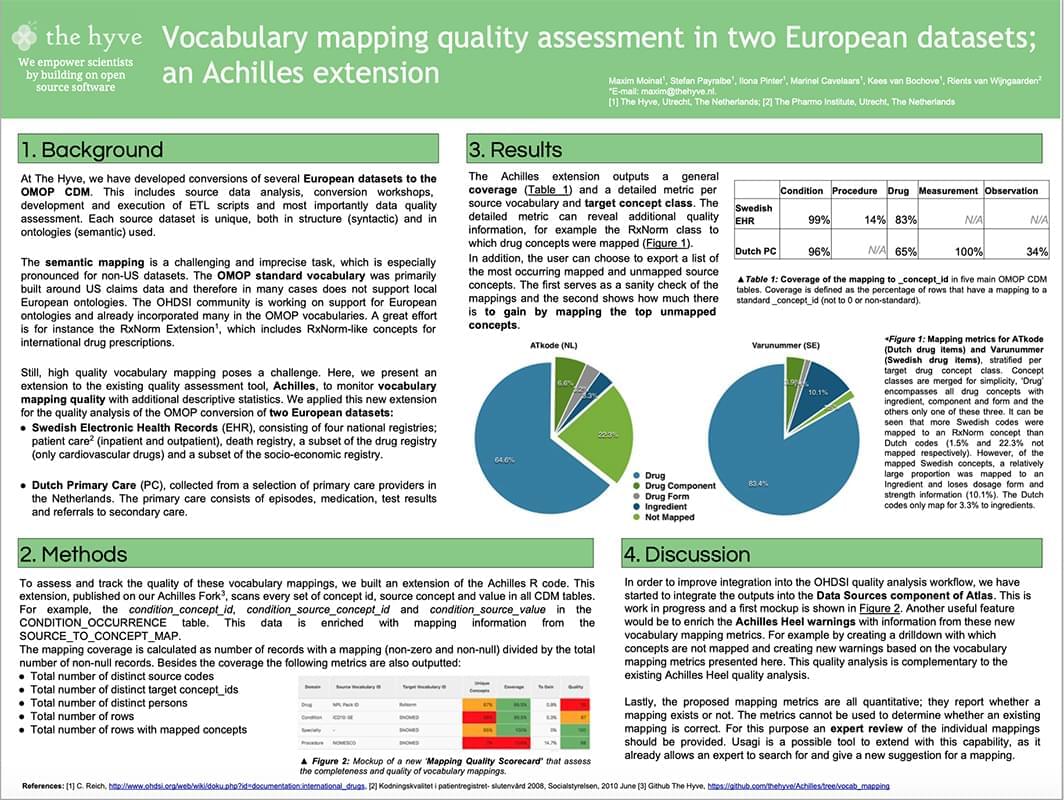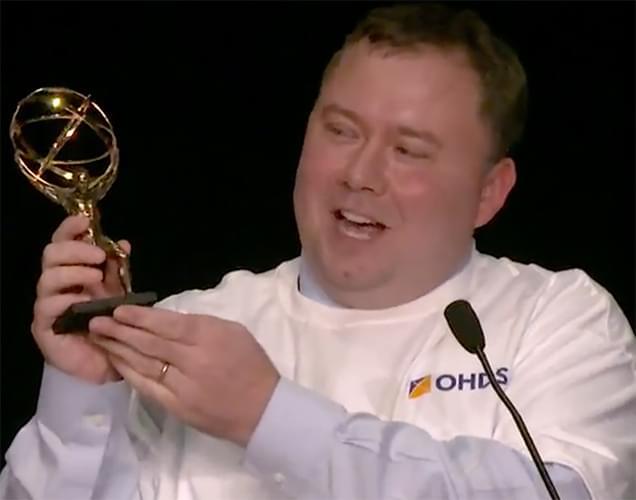After already attending the first European OHDSI Symposium in March 2018, I now had the pleasure of visiting the annual symposium in Washington in October. Representing the Hyve together with Kees, we learned about all the developments going on in the community in a fully packed conference center of the Marriott Hotel.
Starting with an introductory presentation by George Hripcsak in which he summarized the state of affairs and achievements of the OHDSI community, it was Patrick Ryan that introduced LEGEND (Large-Scale Evidence Generation and Evaluation in a Network of Databases). Using hypertension as an example, he made very clear how important it is to provide solid evidence for the reliability of observational data, if it is to be used to inform decision-making.

In between the various presentations Jenna Reps came on stage. First asking for input on patient-level prediction research questions, and later requesting the audience to vote for their favorite. Before the symposium was over, she showed the results of the prediction model her team managed to create in the meantime. Impressive to see how fast the whole process can be executed, while also providing fully transparent results.
Poster sessions
There was definitely no lack of enthusiasm when looking at the number of posters that were submitted. To give everyone a chance to look around, there were even two seperate poster sessions. It was great to have the opportunity to elaborate on the work we have been doing at The Hyve on expanding the ACHILLES mapping quality assessment to an inquiring crowd (click on the image on the right to enlarge).

Fortunately there was still a little time left for me to check out what others have been working on. As we do a lot of mapping work to OMOP CDM at The Hyve, it was interesting to see how the people involved in the THEMIS working group have come up with conventions on how data should be inserted into OMOP CDM. These conventions have been added to the CDM wiki, which will definitely help anyone involved in mapping projects, alleviating the need to scour the OHDSI forums on what the best approach for your dataset would be.
Titan awards

OHDSI symposiums have a reputation to uphold when it comes to the closing ceremony. This time, Patrick Ryan turned it into a full-fledged award show, wherein all the candidates were nominated by members of the community. There were winners in categories of data standards, methodological research, open-source development, clinical application, community support, collaboration and leadership. Each winner was sure of eternal OHDSI glory, but much more importantly, could go home with an Atlas figurine trophy (I hope the sponsors’ money was put to good use by making these out of solid gold).
Tutorial Workshops
On Saturday there were advanced tutorial sessions for people already familiar with the OHDSI ecosystem. I joined the one on patient-level prediction modelling. In small groups, we went through the steps of coming up with a research question and defining the needed cohorts to answer it. A fun exercise, in which the diverse backgrounds of the people involved really helped to think things through.
In the end, one group’s research question was chosen, for which we performed the actual analysis. It was a great hands-on experience to conclude my first visit to the US symposium and I hope there will be more to follow!
You can find all conference materials here.


